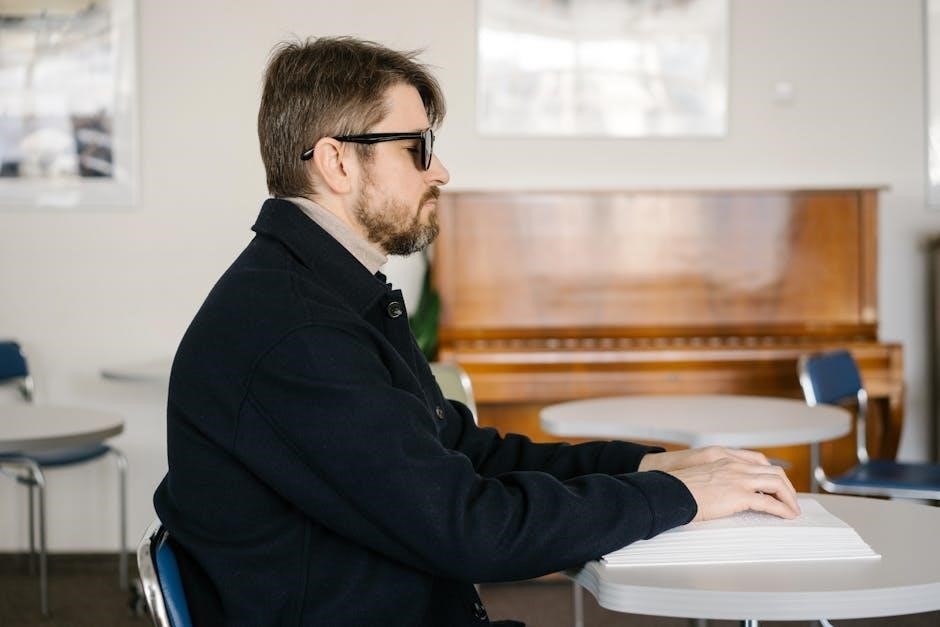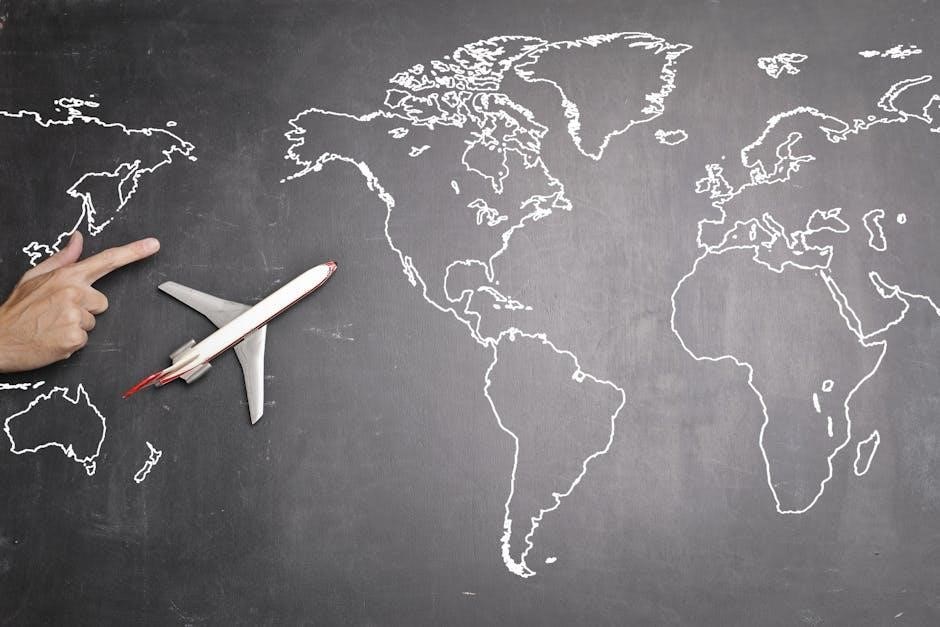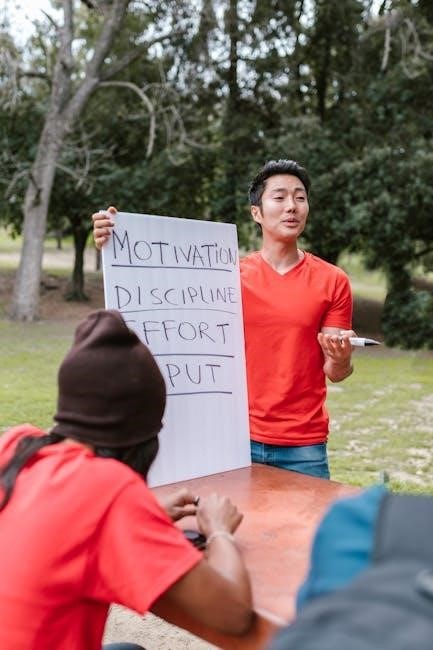Internalized homophobia refers to the absorption of societal prejudices by LGBTQ+ individuals, leading to self-hatred and shame. It stems from heteronormative norms and cultural stigma, causing emotional distress. Understanding its roots is crucial for healing and self-acceptance.
1.1 Defining Internalized Homophobia
Internalized homophobia is a psychological state where individuals unconsciously adopt and internalize homophobic attitudes, leading to self-hatred, shame, and negative self-perception. It arises from societal norms, homophobic messages, and cultural stigma, causing individuals to reject their true selves. This internal conflict often manifests as self-loathing, fear of rejection, and difficulty accepting one’s identity, deeply impacting mental health and well-being.
1.2 Understanding the Origins of Internalized Homophobia
Internalized homophobia originates from societal structures, cultural norms, and personal experiences. Growing up in heteronormative environments exposes individuals to homophobic messages, leading to self-rejection. Family, religion, and media often perpetuate these beliefs, causing individuals to internalize negative perceptions of their identity. This absorption of prejudice fosters feelings of inadequacy and self-hatred, forming the foundation of internalized homophobia.

Signs and Symptoms of Internalized Homophobia
Common signs include self-loathing, shame, and difficulty accepting one’s identity. Behavioral manifestations may involve hiding queerness, engaging in homophobic behaviors, or struggling with self-acceptance due to internalized prejudice.
2.1 Common Indicators of Self-Hatred and Shame
Internalized homophobia often manifests as self-hatred, shame, and difficulty accepting one’s identity. Individuals may experience negative self-talk, self-blame, or emotional distress due to societal prejudice. These feelings stem from internalizing homophobic messages, leading to a distorted self-image and a fear of being judged or rejected. Recognizing these indicators is the first step toward addressing and overcoming them.
2.2 How Internalized Homophobia Manifests in Behavior
Internalized homophobia can lead to self-destructive behaviors, such as substance abuse or self-sabotage, as individuals may act out their shame. It may also manifest as avoidance of LGBTQ+ communities or hiding one’s identity. Some people may even exhibit homophobic behaviors themselves, further perpetuating the cycle. These actions often stem from deep-seated shame and a desire to cope with societal rejection, complicating the path to self-acceptance.

The Psychological Impact of Internalized Homophobia
Internalized homophobia has severe psychological effects, including depression, anxiety, and low self-esteem. It can lead to self-destructive behaviors and strained relationships, causing long-term emotional pain and identity confusion.
3.1 Mental Health Consequences
Internalized homophobia is linked to severe mental health issues, including depression, anxiety, and low self-esteem. It can lead to substance abuse, self-destructive behaviors, and suicidal tendencies. The internalization of homophobic societal views fosters self-hatred, emotional pain, and identity confusion, further exacerbating psychological distress and isolating individuals from supportive communities, worsening overall mental well-being over time.
3.2 The Role of Societal and Cultural Factors
Societal and cultural factors significantly contribute to internalized homophobia by perpetuating heteronormative norms and stigmatizing LGBTQ+ identities. Discriminatory laws, lack of representation, and homophobic rhetoric in media and institutions reinforce feelings of shame and inadequacy. These external pressures internalize as self-hatred, hindering personal acceptance and mental health, while also isolating individuals within their communities and broader society, perpetuating cycles of stigma and emotional distress.

Recognizing and Acknowledging the Issue
Recognizing internalized homophobia involves acknowledging negative feelings and self-perceptions shaped by societal prejudice, which can manifest as self-hatred and shame. Self-awareness and acceptance are crucial first steps toward healing and seeking support.
4.1 Identifying Internalized Homophobic Thoughts and Feelings
Identifying internalized homophobic thoughts and feelings involves recognizing patterns of self-criticism, shame, or fear linked to one’s sexual identity. This process requires introspection and awareness of how societal homophobia has shaped self-perceptions. Acknowledging these emotions is the first step toward healing and reclaiming self-worth, allowing individuals to address and overcome deeply ingrained biases.
4.2 The Importance of Self-Awareness and Acceptance
Self-awareness is crucial in recognizing and challenging internalized homophobic beliefs. Acceptance of one’s identity fosters healing, allowing individuals to move beyond shame and rebuild self-worth. Embracing authenticity helps break free from societal expectations, promoting emotional freedom and confidence. This process, though gradual, is vital for overcoming internalized homophobia and living a fulfilling life.

Strategies for Overcoming Internalized Homophobia
Effective strategies include seeking therapy, joining support groups, and practicing self-compassion. Education and building a supportive network also play key roles in healing and personal growth.
5.1 Seeking Support from Therapists or Support Groups
Seeking support from therapists or support groups is a powerful step in addressing internalized homophobia. Therapists can provide guidance and tools to reframe negative beliefs, while support groups offer a safe space to share experiences and connect with others facing similar challenges. These resources help individuals process shame, develop self-compassion, and build resilience, fostering a healthier relationship with their identity.
5.2 Building a Supportive Community and Network
Building a supportive community and network is vital for overcoming internalized homophobia. Surrounding yourself with understanding individuals who share similar experiences fosters a sense of belonging and reduces feelings of isolation. Engaging with LGBTQ+ groups or allies can provide validation and encouragement, helping you develop resilience and confidence in your identity while creating a safe space for personal growth and healing.

Taking Action to Challenge and Change
Taking action involves moving beyond awareness to actively challenge internalized homophobia. This includes practicing self-compassion, engaging in advocacy, and fostering inclusive environments to promote personal and societal transformation.
6.1 Practicing Self-Compassion and Self-Esteem Building
Practicing self-compassion involves acknowledging and challenging negative self-perceptions rooted in internalized homophobia. Techniques like mindfulness, affirmations, and self-care can foster self-acceptance. Building self-esteem requires recognizing one’s worth and celebrating individual strengths. This process helps individuals replace shame with resilience and confidence, fostering a healthier relationship with themselves and their identity.
6.2 Engaging in Activism or Advocacy Work
Engaging in activism or advocacy work empowers individuals to confront internalized homophobia by challenging societal norms. Participating in LGBTQ+ rights movements fosters a sense of purpose and community. Advocacy helps individuals reclaim their identity and combat systemic homophobia, promoting personal growth and societal change. It allows individuals to transform their experiences into actions that inspire and uplift others, creating a ripple effect of acceptance and equality.

The Role of Education and Awareness
Education and awareness are key to dismantling internalized homophobia. Learning about LGBTQ+ history and culture fosters understanding and acceptance, reducing stigma and promoting inclusivity. It empowers individuals to challenge societal norms and embrace their identities, creating a foundation for healing and growth.
7;1 Learning About LGBTQ+ History and Culture
Understanding LGBTQ+ history and culture is vital for overcoming internalized homophobia. Learning about milestones like the Stonewall riots and key figures in the LGBTQ+ rights movement fosters pride and connection. Exploring cultural contributions highlights resilience and challenges societal norms. This knowledge helps individuals reclaim their identity and reject harmful stereotypes, promoting self-acceptance and empowerment. It bridges the gap between past struggles and present-day advocacy, inspiring personal and collective growth.
7.2 Understanding the Impact of Homophobia on Individuals and Society
Homophobia profoundly affects individuals by fostering internalized shame, mental health challenges, and social isolation. It perpetuates systemic discrimination, limiting opportunities and perpetuating inequality. Societal norms rooted in homophobia contribute to stigma, violence, and marginalization. Addressing these impacts requires dismantling prejudiced structures and promoting acceptance. Understanding the widespread consequences of homophobia is essential for creating inclusive environments and supporting LGBTQ+ individuals in overcoming internalized shame.

Embracing Authenticity and Identity
Embracing authenticity allows individuals to align with their true selves, fostering self-acceptance and pride. Overcoming internalized homophobia involves rejecting societal norms that perpetuate shame, embracing LGBTQ+ identity, and thriving unapologetically.
8.1 Overcoming the Fear of Being Openly LGBTQ+
Overcoming the fear of being openly LGBTQ+ involves self-awareness and challenging internalized homophobic beliefs. It requires embracing authenticity, building self-compassion, and seeking supportive environments. Recognizing societal influences and redefining personal identity helps diminish shame, fostering confidence and pride in one’s true self. This journey is pivotal in healing and living an authentic, fulfilling life free from internalized stigma.
8.2 Celebrating One’s True Self and Finding Pride
Celebrating one’s true self involves embracing identity with empowerment and self-love, transcending internalized homophobia. It’s a journey of self-acceptance, where individuals reclaim their authenticity and find pride in their uniqueness. Surrounding oneself with supportive communities and role models fosters resilience. Publicly expressing identity and participating in LGBTQ+ events can enhance confidence, promoting mental well-being and societal change, while nurturing a sense of belonging and joy.

Moving Forward and Living Authentically
Moving forward involves healing from internalized homophobia, embracing one’s true identity, and fostering self-compassion. It’s about living authentically, free from societal expectations, and building a fulfilling life rooted in self-acceptance and pride.
9.1 Setting Personal Goals for Growth and Healing
Setting personal goals fosters growth and healing from internalized homophobia. Start with small, achievable objectives, like journaling feelings or engaging in self-care. Celebrate milestones, no matter how minor, to build confidence. Surround yourself with supportive people who affirm your identity. Regularly assess and adjust goals to align with your evolving needs, ensuring progress toward a more authentic, self-compassionate life.
9.2 Navigating Societal Expectations with Confidence
Navigating societal expectations with confidence requires setting boundaries and embracing authenticity. Challenge harmful norms by asserting your identity proudly. Practice self-compassion and surround yourself with affirming communities. Educate others when appropriate, but prioritize your well-being. Confidence grows through consistent self-affirmation and refusing to internalize societal biases, allowing you to thrive unapologetically in a world that often resists change.
